Affiliate link disclosure – The BMW Repair Guide uses affiliate links in their site. For more information on affiliate links, please click here.
- Repair Summary
- Repair Difficulty and Cost
- Repair Video
- Parts Diagram
- Required Parts List
- Repair Steps
Repair Summary
This article gives detailed instructions on diagnosing and repairing the evaporative emissions control system (EVAP) in a BMW vehicle. Even though we used a 2011 335i to perform this repair, this article can be applied to any BMW vehicle with minor modifications to the repair steps.
See all vehicles this article applies to
All BMW Models
Diagnosing a leak in your BMW's EVAP system is an easy repair for the home mechanic with average abilities.
The BMW evaporative emissions control system (EVAP) is a sealed system of hoses, valves, and sensors that contains and monitors the fumes from the vehicle's fuel tank and lines. Simply put, the BMW EVAP system prevents fuel vapors from escaping from the vehicle and polluting the atmosphere. It achieves this by storing the fumes in a charcoal canister, which eventually sends them back to the engine where they are combusted in the cylinders. It is a very important part of your BMW's emissions system and should be fixed immediately if a leak is diagnosed.
A leak in your BMW's EVAP system will cause the Service Engine Light (SEL) to illuminate in the instrument cluster. It also will cause one (or more) of the following fault codes on a diagnostic scanner including P0455,P0456 and P0442. A BMW EVAP leak will not cause any performance issues with the engine.
The main cause of an EVAP leak is usually the gas cap. Years of twisting on and off can cause the gas cap sealing gasket to fail, allowing fuel fumes to escape the gas tank. The BMW Repair Guide strongly recommends that before spending time and money diagnosing a leak in your emissions control system you replace the gas cap first - caps are cheap (under $20), and even if it doesn't solve the issue you have changed out a part that will eventually need to be replaced anyway.
If the cap is not the source of the EVAP leak, then the entire evaporative emissions control system will need to be smoke tested. This is a very simple procedure....even for the home mechanic. It does require using a smoke testing machine. We have included several excellent and reasonably priced ones in the parts block below. If you are a home mechanic that will be doing future repairs to your BMW we strongly recommend purchasing a smoke machine. A good diagnostic smoke machine is a valuable asset to every home mechanics garage which will pay for itself multiple times over - it is as important as a socket wrench when it comes to working on your BMW.
We give detailed instructions below on testing your BMW EVAP system for a leak. Please also see our parts blocks below for the essential parts and supplies needed to complete this repair.



If the video does not appear below, please click here to view
View the video version of this repair.
View the detailed parts diagram for this repair.
Includes detailed part diagrams, part numbers and links to purchase all of the required components needed to complete this repair.

Before starting this repair, you must have the following required parts.
Fits most BMW vehicles produced from 1990 to present
Your fuel cap does more than you would think. Not only does it seal your tank, it allows venting to keep your fuel flowing freely. It is such an important aspect that if you do not tighten it properly, a check engine light can occur. A common source of emission test failures. Over time gas caps lose their ability to hold pressure, resulting in check engine lights.
All BMW Models
Professional quality smoke tester at an affordable price. Works on all systems including intake, fuel, and cooling. Comes with adapters.
All BMW models
16 piece set. Assorted caps and plugs for sealing off the intake or cooling system for smoke testing.
All BMW Models
A cone adapter is an absolute necessity for smoke testing the intake or cooling systems on your BMW. It is the only proper way to seal off the intake boot without creating annoying leaks.
All BMW and MINI vehicles
Affordable and powerful...this is the only BMW diagnostic scanner you will ever need. Schwaben Multi-System Elite Scanner is a unique tool that delivers dealership level diagnosis for BMW and MINI vehicles. Works on 1987-current model BMW and MINI models. Display fault codes, clear error lights, reset Conditional Based Service (CBS) settings, register new batteries, calibrate fuel injectors, reset adaptations and more. Displays live data for entire vehicle allowing high level diagnostics and repairs. Extremely easy to use, this is the
Section 1 - Diagnosing the BMW EVAP system
As mentioned previously, if you feel you may have a leak in your evaporative emissions control system, the first step is to replace your gas cap. A failed gas cap accounts for most EVAP leaks and is a very inexpensive way to diagnose the system (see our parts block above). If replacing the gas cap does not solve the issue, then you will have to smoke test the system. If you do not want to replace the gas cap, start at step 2 below.- Open the gas filler door and replace the gas cap. If you have a diagnostic scanner, clear all of the fault codes (which will also clear the Service Engine Light) and drive the vehicle to see if the codes return. If they do, proceed to step 2 below.
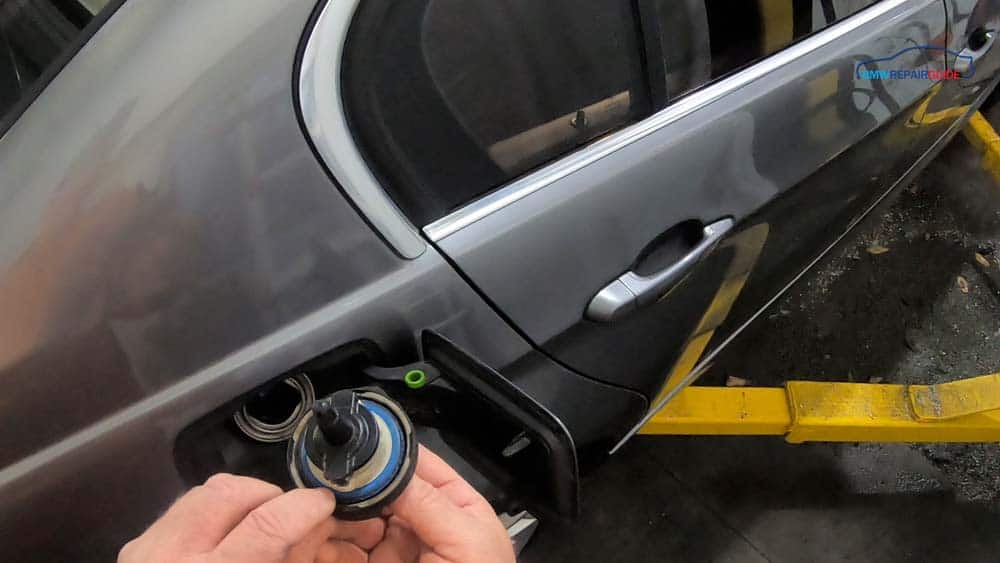
- If replacing the gas cap does not clear your error lights and fault codes, or if you have decided to skip step 1 altogether, then you will have to smoke test the EVAP system to find the leak. Please see our parts block above for a list of reasonably priced smoke machines.

- The EVAP system should be tested from the engine compartment at the fuel vent valve. The fuel vent valve is easily accessible in most BMW models.
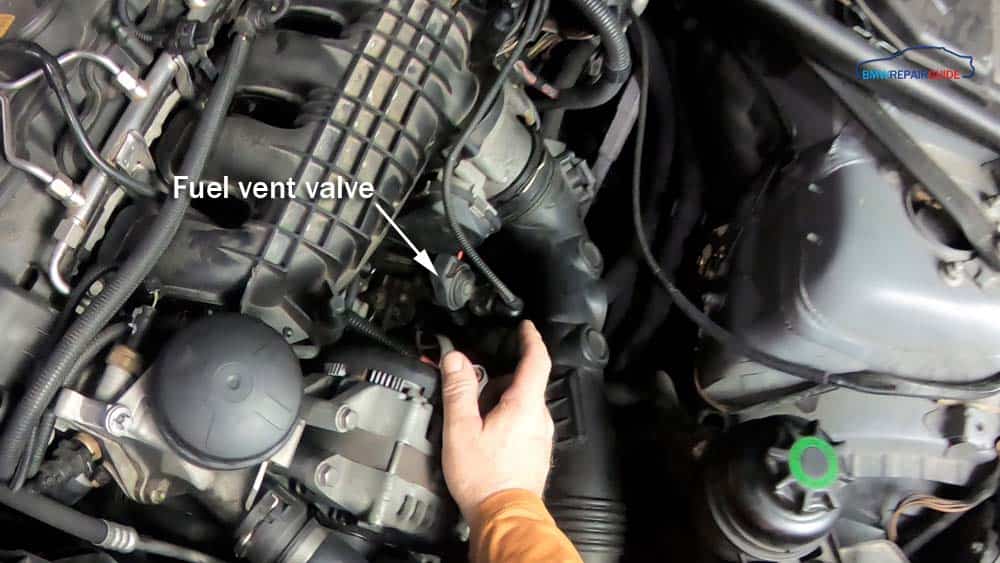
- Unplug the fuel vent valve and detach the line that feeds it from the rear of the vehicle. Be careful when detaching the line...they can become brittle after years of exposure to engine heat and can break.
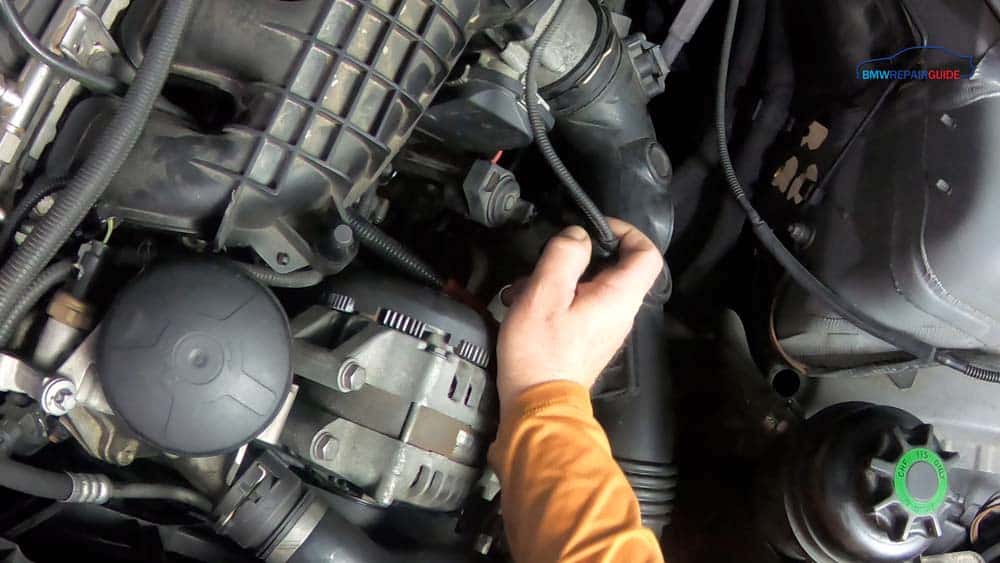
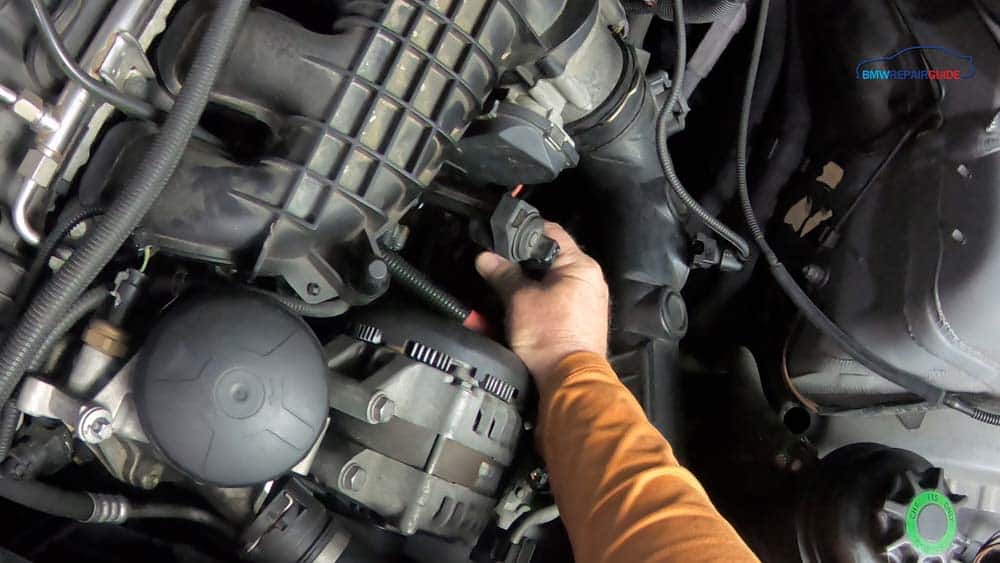
- Insert the adapter tip from the smoke machine into the vent line. If it doesn't fit tight, seal it with some 3M green or blue tape (do not use duct tape...or any tape with a strong adhesive).

- Start the smoke machine and allow the EVAP system to become pressurized. Starting back at the gas cap, confirm that there are no leaks. If there is a leak, replace the cap.

- If the cap is not leaking, remove it to confirm there is smoke in the gas tank. If there isn't, check your smoke machine to confirm it is working correctly. If there is, then proceed to the next step.

- The next probable cause of a BMW EVAP leak is the charcoal canister/vapor detection pump and its associated plumbing. These parts are very susceptible to leaking fuel vapors as they age. The charcoal canister/vapor pump is located in different areas of the vehicle depending on the model of your BMW. In the 2011 335i (E90) the charcoal canister/vapor pump is located under the rear left bumper and is easily accessed as shown below.
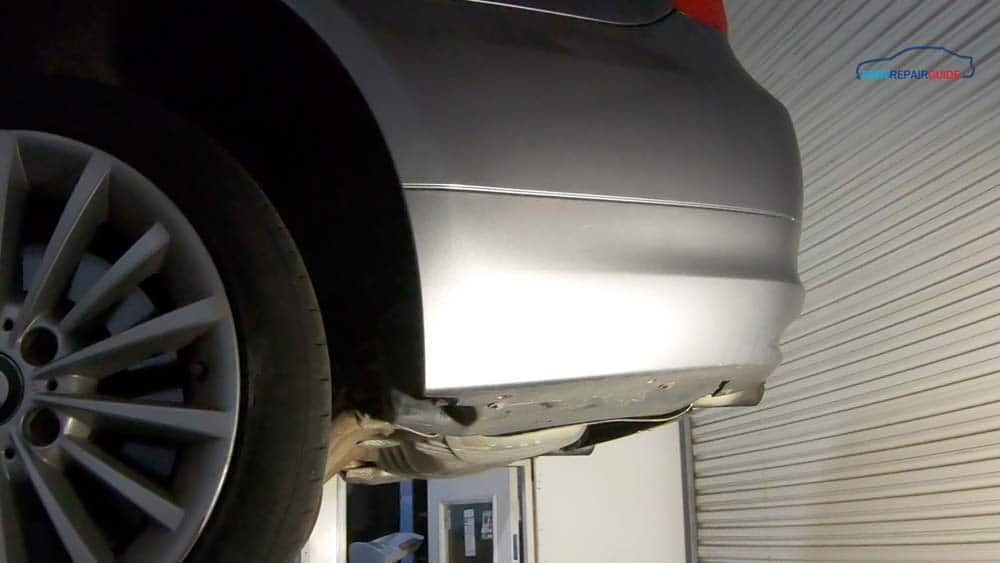
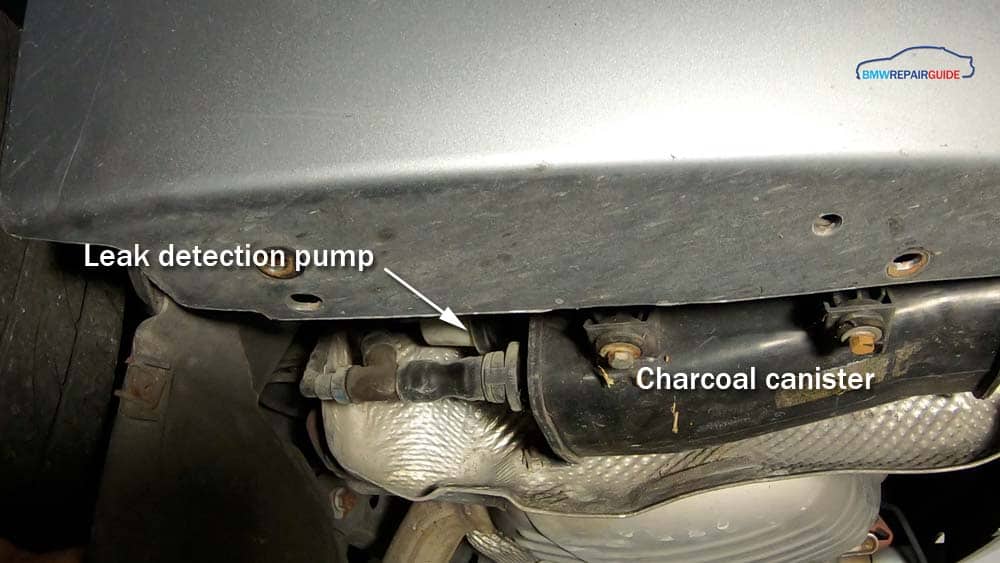
- If the charcoal canister/vapor detection pump show no signs of leaking smoke, then the next step is to check the fuel pump and fuel level sensor. The fuel pump and level sensor are located under the rear seat of most BMWs. Remove the covers from them and check for any smoke leaking around the gaskets.
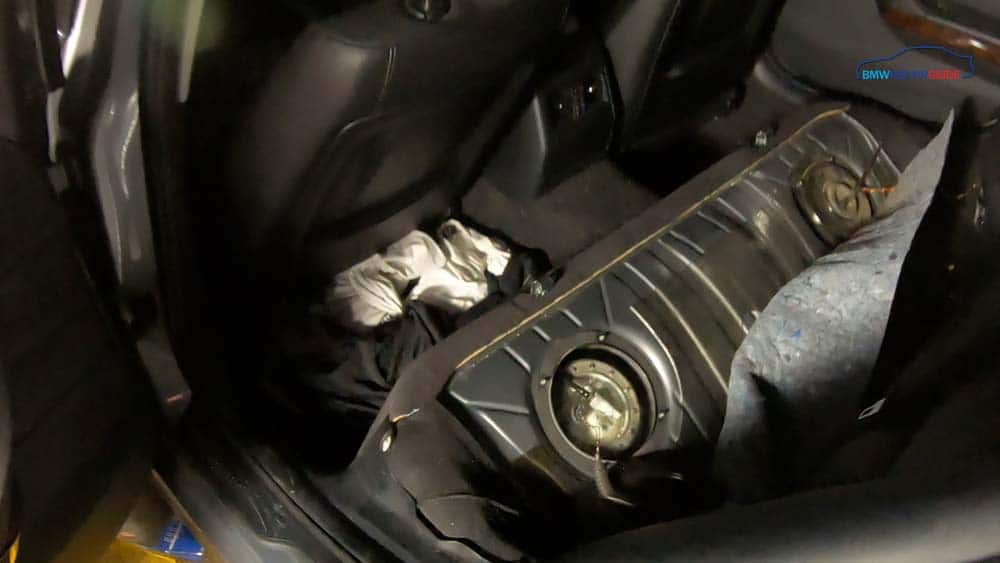
- As shown in the following image, the fuel sending unit was the cause of our leak. The gasket had become pinched during a prior repair allowing fumes to escape and triggering the fault codes and Service Engine Light. After fixing the gasket, the vehicle returned to normal operation.
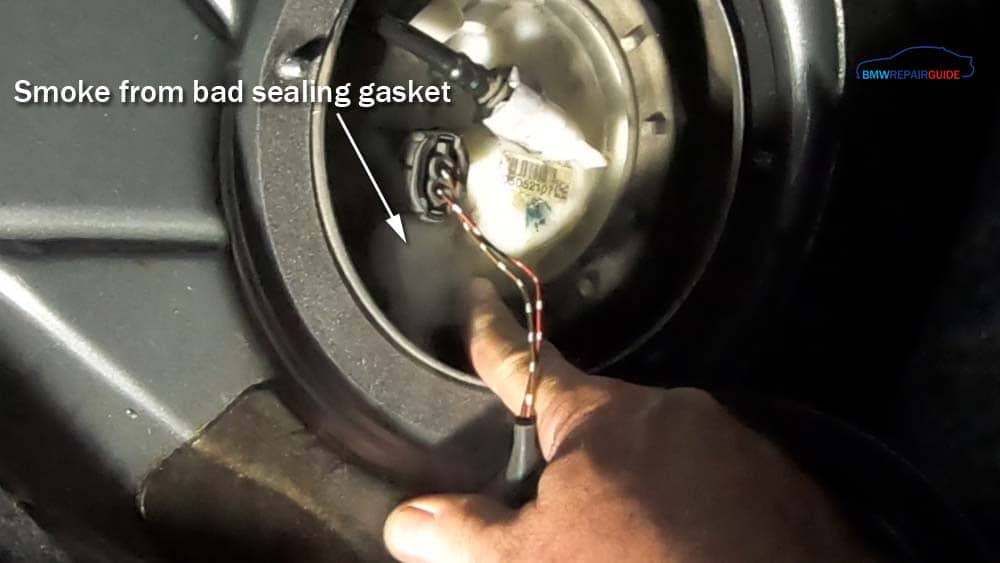
- The previous three test areas account for just about all EVAP leaks in BMW vehicles. If you are still having an issue with your EVAP system after conducting the above tests, repeat them again. Sometimes the smoke leak can be very small and hard to detect. Use a flashlight to inspect the underside of the vehicle to make sure there hasn't been an impact with road debris that could have cracked an EVAP line running from the tank to the engine compartment. If the leak still can't be found then the vehicle will need to be taken to a certified BMW repair shop for further diagnosis.
BMW EVAP Leak Detection and Repair Finished
